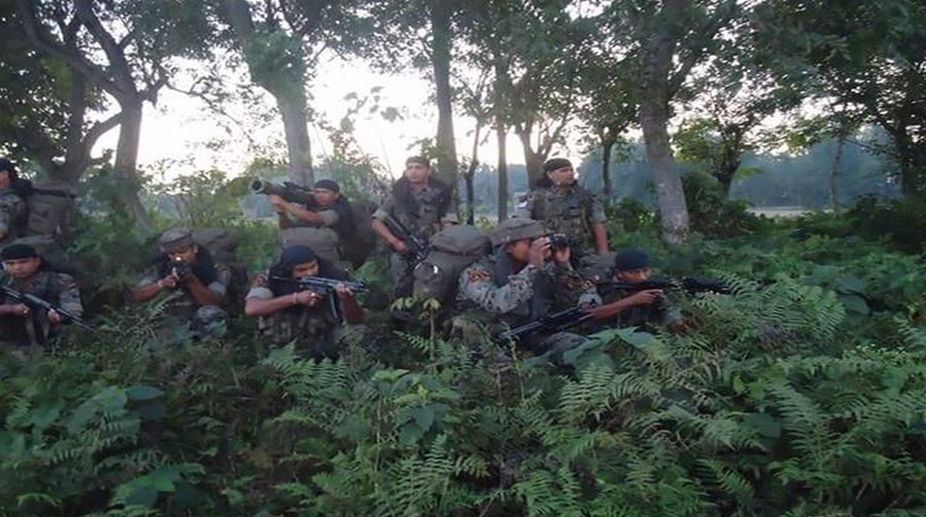Bob Dylan’s song, “Blowin’ in the Wind” asks many critical questions and the chorus says, “The answer my friend is blowin’ in the wind”.This is exactly the answer to the question, when will the Framework Peace Agreement signed between the NSCN (IM) leaders and the Government of India on 3 August 2015 (its contents are yet to be made public) be wrapped up finally and what will be its outcome? According to government interlocutor, R N Ravi the final negotiated accord is expected any time now. But the big question is will it transform Nagaland and its political and bureaucratic class into more conscientious rulers? That answer too is “blowin’ in the wind”.
Any visitor to Nagaland agonises about its decrepit roads, which have not seen any improvement for decades. For a state that has the best and most expensive churches (the one opened recently in Zunheboto, reportedly cost a whopping Rs 30 crore) the visuals are stark. People dress up in their Sunday best; walk on dusty, dilapidated roads, covering their faces with masks or handkerchiefs. Then they enter a swanky church to pray and listen to endless preaching. And life goes on. The Centre continues to pump in money for a plethora of developmental projects, which are all hanging fire. Clearly, New Delhi is not bothered with what happens at its distant periphery.
Advertisement
Earlier, the Northeastern states, especially those bordering China, Bangladesh and Myanmar, were seen only from the prism of security. The states had to be held together to be a part of the “nation”. They needed to be controlled militarily since Nagaland and Manipur are notorious for their armed conflicts. Later, Assam and other states joined the bandwagon of militancy to assert their grievances. It’s a different matter that militancy has now degenerated into large-scale extortion that is bleeding its own people in each of the afflicted states.
The Centre does not have effective mechanisms and does not care to monitor funds utilisation in the Northeastern states. The Comptroller and Auditor General’s reports repeatedly indict state governments but they don’t care.
The “Indian” taxpayers’ money has only enriched the tribal elite that is co-opted into the “Indian mainstream” to help safeguard the borders. This outflow of funds into the region is not unintentional; it’s one way of legitimising the power of a central government, which is seen as the patron while the states are mere clients. This deadly cocktail of feudal and predator capitalism, under the direct patronage of a liberalised soft state, which allows its clients to go as they please, has entrenched corruption in every aspect of life. In fact, corruption is so organised that it is hard to break the circuit. Corruption has ravaged the moral and spiritual backbone of the people, particularly those at the cutting edge of governance and politics.
The long and tardy peace process that started in 1997 following the signing of the ceasefire between the NSCN (IM) leaders and the Centre, has taken a huge toll on the moral and social capital of the Naga people. Breakaway factions from the original armed groups have made a business of extortion. They control the entire trade and commerce of Nagaland and the hills of Manipur where their cadres dominate. Young and enterprising Naga men and women, who wish to do clean business, are frustrated. There is a mafia operating even in the second-hand clothes market. Naturally the youth are disillusioned. Those who own buildings in the swanky areas of Dimapur have chosen to take the easy way out and rent their premises to non-Naga, nontribals and in recent times to illegal Bangladeshi immigrants, although that term is a misnomer since all those with doubtful Indian identity have their papers issued from the Karimganj district of Assam. It appears that getting documents such as PAN cards, election photo identity cards and even Aadhaar is no big deal. Even in Dimapur there is a system in place where Aadhaar cards are issued in a jiffy.
The question is what happens to the Naga entrepreneurs if their opportunities are snatched away by the more enterprising people from across the Bangladesh border? What is shocking to learn is that there are as many as 20 madrassas in Dimapur alone. This is not a vacuous claim but has come out of diligent research. What does that tell us about Dimapur? Is this burgeoning financial hub of Nagaland still under the hegemony of the Nagas or has the economic control passed out of their hands? Many Nagas are in a state of denial. Others are more pragmatic.
The people of Mokokchung district, for instance, have decided not to rent out their premises to non-Nagas with doubtful identities. Others are beginning to discuss the matter very seriously. There is, however, a small minority that benefits from the benami trade where even taxi permits in the names of Nagas are run by the outsiders, as claimed by those who know. Several of those taxis are plying between Kohima and Dimapur. These beneficiaries deny that the outsiders are a threat to the larger Naga socioeconomic future! Already, the corruption levels in Nagaland are beggar’s description. One cannot recall ever driving on a good road in that state and roads are a good indicator of the governance in any of our states. Hence there is a sense of futility; of public cynicism, of complacency while some brazenly immerse themselves in their exclusive well- being. The youth, who see this and feel helpless, take to social media with a vengeance. Every now and again the discourse on social media platforms shifts to the outcomes of the peace negotiation, which is now pregnant deficient with hopes of a settlement. But will the settlement change the moral fibre of a people?
Peace talks are like a dish in a pot; everyone is stirring it without adding anything of substance to its contents. The discourse is emotionally charged but intellectually deficient. There are several civil society groups but they don’t converge on some grounds. Each one is talking about the other but conversations that rise above tribal and group loyalties have not emerged.
Some of the more prominent organisations have lost credibility for taking their cue from the NSCN (IM) and speaking only what the outfit allows them to. No wonder the process is hamstrung. While we appreciate the fact that the NSCN (IM) has been on the quest for peace for the longest period and that senior leaders have made immense sacrifices to keep the movement going, it is now critical for those leaders to rise to the stature of statesmen and invite other voices to find place in the framework because the negotiated settlement, if it comes, will impinge on the Naga people in Manipur, Arunachal Pradesh and Assam, even if territorial integrity is not affected.
The Nagas may have started out as tribes with their village principalities but today they have assimilated democracy and its virtues, no matter how flawed the present democratic system is. They will not wish to return to a dictatorial system where a few at the top of the hierarchy decide their fates. They want to be part of the peace process, no matter how weak their voices may seem. That is the essence of democracy.It is time for the NSCN (IM) leadership to take stock of these emerging realities.
Mount Hebron is not a democratic space. It is a place where prayers are held but the heart does not change. Once the armed groups come out of that safe zone, where only their voices count, they will have to learn to listen, live and let live.
For too long people have been silenced by the gun. But, for how long can this intimidation carry on? How much more fratricidal killings can the Naga people endure? These are questions that the NSCN (IM) leaders need to boldly face.
(The writer is Editor of the Shillong Times and can be contacted at patricia.mukhim@gmail.com)











